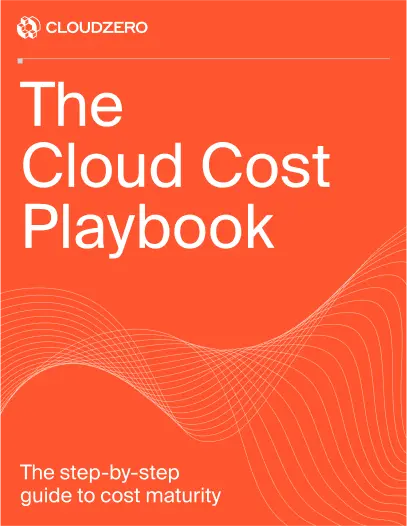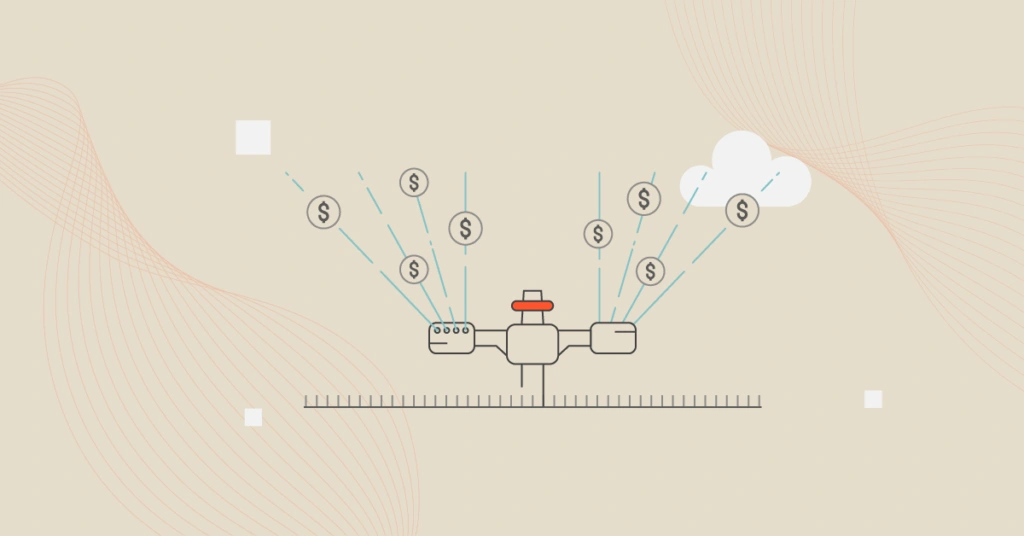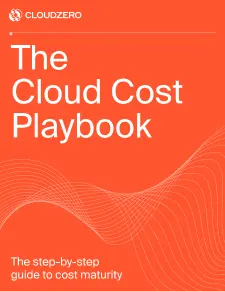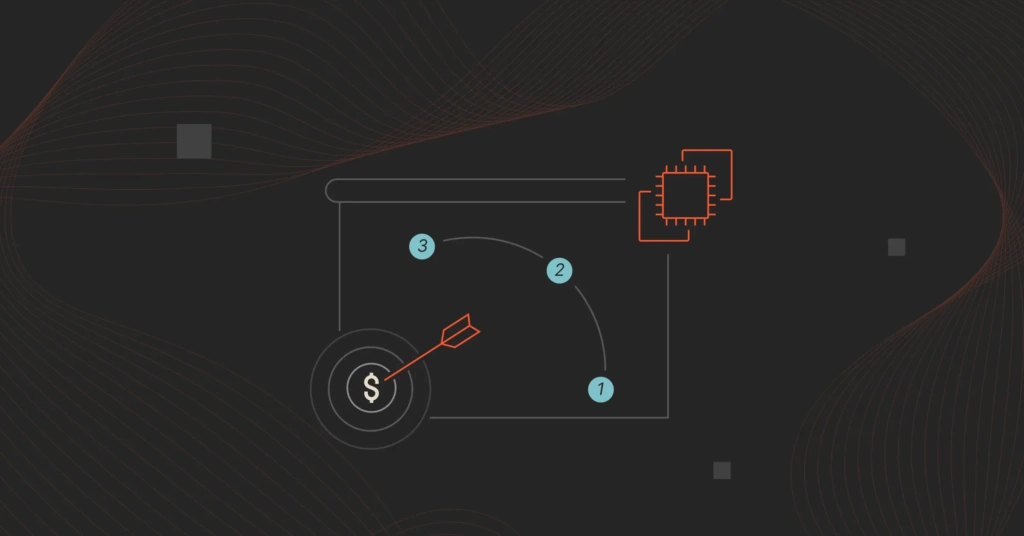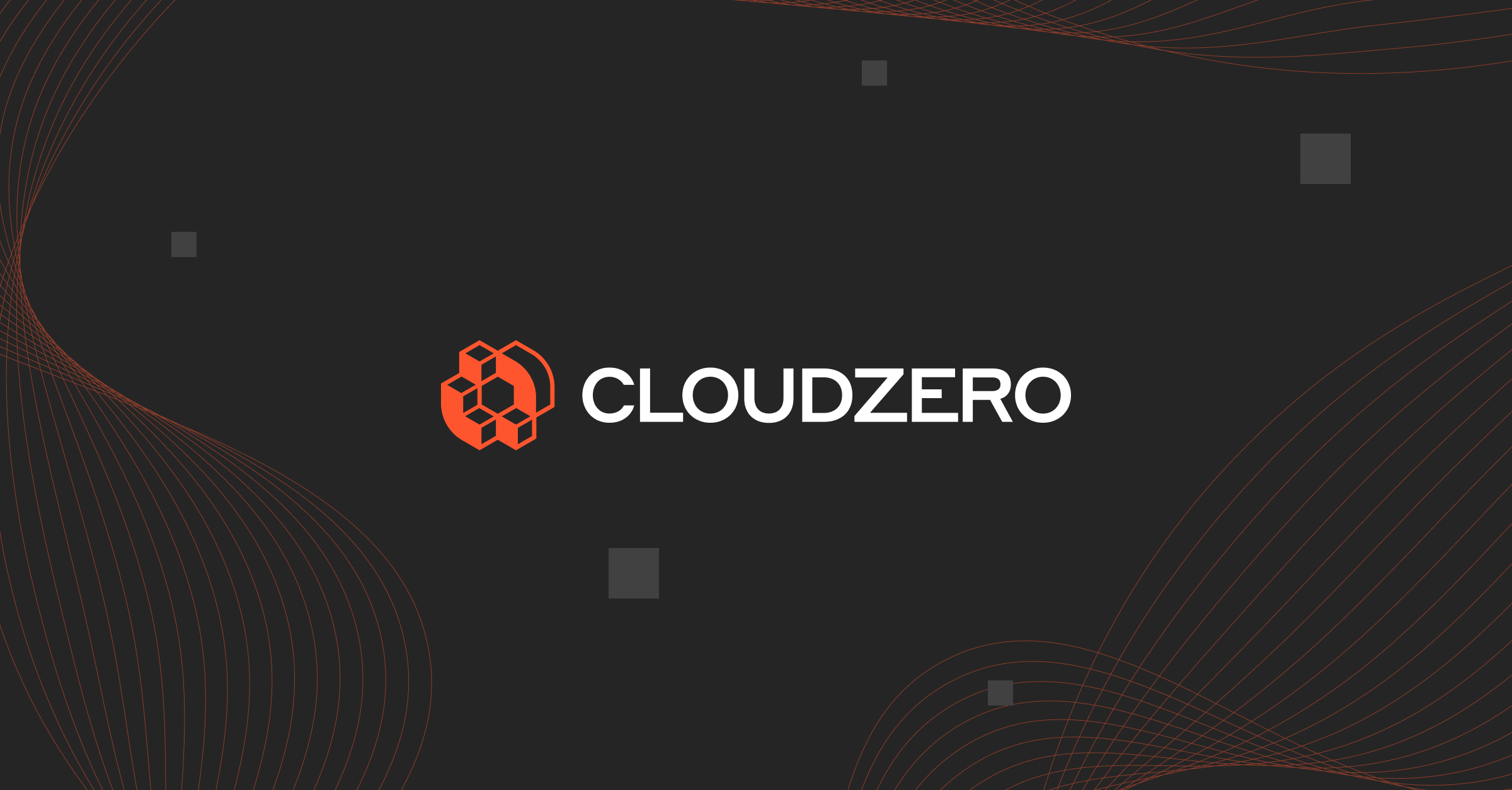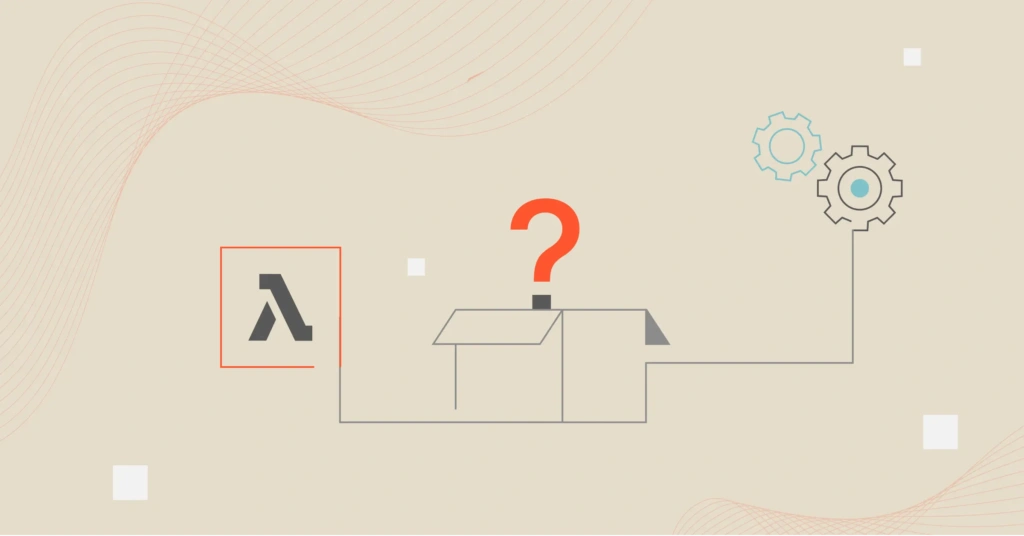My wife and I spent hours this summer at home digging in the dirt. We planted new shrubs and perennials and created a small vegetable garden. We spread many square yards of fresh topsoil and grass seed over areas of lawn that needed rejuvenation.
It turns out, I should have done all that landscaping with a FinOps leader’s mindset — before my water bill tripled when I wasn’t looking.
As a CloudZero product marketer, I often speak about the challenges organizations face with AI and cloud cost visibility. One key aspect is unit economics, which is the ability to pinpoint the exact cost of delivering a single “unit” of value. This could be a customer, an API call, a product feature, or even a single AI inference.
Following my lawn-watering reality check, I viscerally understand the pain of surprise consumption bills and why this has become a major issue for CFOs and boards of directors. I couldn’t help but spot the parallels.
Following my lawn-watering reality check, I viscerally understand the pain of surprise consumption bills and why this has become a major issue for CFOs and boards of directors.
Similar to what’s happening in many enterprises scaling AI usage without knowing the costs, I was blind to the unit cost of water. I mean, it was a dry summer in Massachusetts — so I watered everything to keep it growing. And I watered some more.
Then the quarterly water bill arrived. I nearly fell into a rose bush. All that extra sprinkler time this summer came with a price. We tripled our normal water usage and got a bill to match.
Testing The Garden Hose
Curious, I decided to run my own little unit economics experiment. I turned the garden hose on full blast into a bucket and timed it. The result? About four gallons per minute. Multiply that by an hour, and my sprinkler pushes through a whopping 240 gallons of water.
I dug deeper to understand my costs. In my town, water is billed in units of 100 cubic feet, which equals 748 gallons. With combined water plus sewer charges, I pay roughly $24 per unit. (I’m rounding these numbers to make them easier to work with, but the lesson holds.)
Breaking It Down Into Unit Costs
Once I did the math, I had enough data to start calculating what my outdoor watering really cost me:
- Running a lawn sprinkler for one hour (about 240 gallons): ~$7.70
- Watering the garden and other plants for 15 minutes: ~$1.93
I even went inside and figured out a few things:
- Running one dishwasher cycle (6 gallons): ~20 cents
- Flushing the toilet (1.6 gallons): ~5 cents
Suddenly, I had unit economics for my own water consumption. Crystal-clear visibility. With those insights, I could start weighing tradeoffs. Should I keep the front lawn green and let the back lawn go brown? Water the azaleas four times a week, or two?
From Lawns To LLMs: The Black Box Problem
This experience is surprisingly aligned to what finance leaders (along with engineering and FinOps leaders) face in the enterprise. Like water, cloud and AI services are metered. Like water, the rates aren’t secret. But the actual usage is often invisible until the bill arrives, and then it’s too late.
Consider the correlations between how water and AI usage are metered:
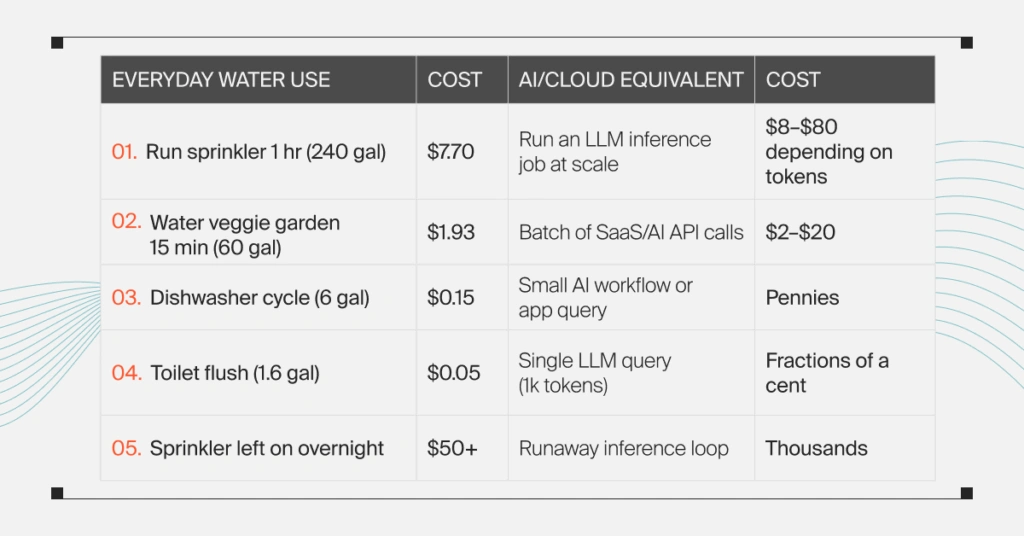
Excessive prompt chaining or duplicate model deployments are the FinOps equivalent of leaving the sprinkler on overnight. And “shadow AI” projects, experimental workloads that teams spin up without oversight, only add to the surprise. Finance teams watch margins evaporate. Same for product owners.
The real problem isn’t just the costs, it’s the black box: Without visibility into unit economics, companies can’t answer simple but critical questions, like:
- Which team or feature drove that spend?
- Was this investment tied to customer value?
- Should we keep spending here, or cut back?
How CloudZero Makes AI Spend Transparent
This is the problem CloudZero solves. Just as I broke my water bill into units I could understand, CloudZero breaks down cloud and AI spend into actionable unit economics.
- AnyCost™ ingestion brings in cost and usage data from AWS, Azure, GCP, SaaS, and now AI providers like Anthropic’s Claude and other LLM families, normalizing it all into one common model
- CostFormation allocation maps 100% of spend, including untagged and shared resources, to the right products, teams, and features, even cost per customer
- Real-time anomaly detection surfaces spikes before they spiral, so you don’t get surprised by the invoice weeks later
With CloudZero, engineering and finance teams see the same AI numbers in real time. Engineers can connect spend directly to architectural and design decisions, while finance gets defensible, auditable reporting for the CFO or board.
The Bottom Line
My summer water bill taught me to look before I open the spigot. Without visibility, even everyday usage can quietly explode into costs I never expected. But once I broke it into units, I could finally make informed decisions about what was worth the spend.
That’s the same journey enterprises are on with AI. CloudZero shines a light inside the black box, giving teams unit economics they can act on. The result is less waste, reduced risk, and smarter investments in innovation.
If you’re trying to wrangle AI costs, check out a valuable resource, “The AI Cost Optimization Playbook,” updated for 2025.
